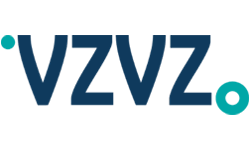Use Agentic AI to generate smarter API tests. In minutes. Learn how >>
Software must change rapidly to stay competitive. Teams require testing solutions that move at speed and ensure the delivery of safe, secure, and reliable software.
Focus on the most important software issues with test automation tools and solutions that prioritize them for your team. Streamline remediation of software defects and vulnerabilities with AI-enhanced testing solutions.
See current software quality and unresolved problems at a glance, allowing the team to confidently release it when it’s ready.
Remove redundant work and tedious tasks to streamline testing and enable teams to focus on more critical areas of development.
Deliver high-quality software at scale using automated testing solutions that span the SDLC with our Continuous Quality Testing Platform.
Keep testing up to speed with fast-paced development. Deliver software on time with confidence that it does what users need.
Understand risks in the software and prevent problems after the release with advanced analytics and metrics.
Parasoft’s static analysis solutions implement many different techniques to deeply analyze code, including:
Each type of analysis helps look for certain classes of errors and find bugs early when they’re cheaper and easier to fix. Additionally, our static analysis solutions enforce conformance against coding and software engineering standards like those for security (CERT, CWE, OWASP) and functional safety (ISO 26262, DO-178C DAL-A, IEC 61508, and more).
An optional integration with various LLM providers like OpenAI and Azure OpenAI explains the guidelines and reason a violation is important, providing specific remediation advice based on the rule/checker and a developer’s code to fix issues quickly.
Parasoft DTP’s reporting and analytics engines apply various AI models to the findings to automatically prioritize and triage the output, giving development teams the advantage of concentrating on what matters most and knowing what they can safely ignore.


“A single day of support was all we needed to get started. From then on, our lives have never been the same! There was a revolution in our way of developing that allowed us to gain precious time to focus elsewhere.”
Daniele De Nicola, a Product Software Verification and Validation Supervisor at Leonardo
Software development teams increase productivity and speed to market with Parasoft’s automated unit testing solutions for C/C++, Java, and .NET programming languages. Our solutions enable developers to ensure new code works as expected without having negative impacts on existing functionality.
Parasoft C/C++test provides a robust unit testing framework. Development teams can streamline unit testing processes by automating test creation, which includes mocks, stubs, and assertions, to effectively isolate the unit under test and ensure a flawless test case operation. Developers effortlessly create or automatically generate unit tests using any of the following:
Comprehensive unit test reports aid in satisfying compliance demands. Teams gain access to advanced analytics as C/C++test collaborates with Parasoft DTP, providing interactive reports and seamless bidirectional requirements traceability with ALM/REQ solutions.
Parasoft Jtest, enhanced with artificial intelligence (AI), automatically generates high-quality unit tests in bulk or one at a time for existing legacy code or new code. Teams can optimize and customize unit tests with one-click actions to improve test maintainability, mock dependencies, and add assertions for regression control. Easily identify what test cases are impacted by code modifications by using test impact analysis in the IDE and CLI and get faster feedback by executing only the subset of test cases impacted by change.
By using our proprietary AI to create and update unit tests completely on premises, Java developers maintain security and privacy. No data leaves the user’s environment.
Parasoft dotTEST enables development teams to easily execute their NUnit and MSTest tests in the IDE or through CLI integration within CI/CD pipelines. Easily gather code coverage metrics and run test impact analysis from the CLI to focus testing efforts on the areas of the codebase that have been changed.

“Parasoft C/C++test gave us all the software test automation solutions we needed in one package to help us satisfy compliance to DO-178C for a very large code base.”
Brenton Graefe, Software Engineer
Developers and testers can leverage SOAtest’s AI to analyze traffic patterns and create test scenarios that make the API calls represented by that traffic. It’s easy to maintain the created tests and reuse them for load, performance, and API security.
Here’s how teams can put our API testing solutions to work:


90%
Reduction in API test execution time.
80%
Increase in API test coverage.
Parasoft’s integration testing solutions for C/C++, Java, .NET, and web applications ensure consistent test coverage across different interfaces, manage dependencies between components, and automate complex test scenarios.
Embedded software development teams working with C and C++ code can use Parasoft C/C++ testing solutions for integration testing. Our solutions ensure that the interaction between components and modules of the embedded system works seamlessly, which is essential for validating higher-level functional requirements.
Teams can more easily fulfill compliance with industry functional safety and security-critical standards by linking test cases to requirements in C/C++test or C/C++test CT.
Read Blog: How stubs improve integration testing »
Our integration testing solutions for microservices and web applications provide a unified platform to create automated test cases and mitigate testing bottlenecks caused by environment dependency constraints. Parasoft SOAtest offers an easy, codeless way to create integration tests to validate business logic across multiple interfaces, such as APIs, microservices, web UIs, and databases.
With support for 120+ message formats and protocols, teams can create end-to-end test scenarios across diverse technology stacks, reducing the need for separate tools and workflows. This results in stable test automation and streamlines integration test creation.
Teams that use Java-based Selenium framework for integration testing can increase productivity and reduce time spent on test maintenance with Parasoft Selenic, which integrates with CI/CD pipelines to heal Selenium test cases at runtime using AI.
With Parasoft Virtualize, teams can create intelligent simulations of service dependencies between different components or services and generate virtual test data to ensure that test environments are stable and ready for automated integration testing.
Parasoft offers comprehensive solutions to facilitate acceptance testing, enabling thorough evaluation of software against specified requirements. By leveraging our solutions, teams can streamline the acceptance testing process, ensuring software readiness for delivery to end users or stakeholders.
Acceptance testing is particularly crucial for embedded C/C++ safety-critical applications that must meet the expectations of customers and regulatory agencies. In C and C++ development, Parasoft C/C++test and C/C++test CT play vital roles in acceptance testing. Through automated testing, including testing on target hardware, our solutions confirm that software is safe for deployment in the field and in critical environments like automotive systems, medical devices, aerospace controls, railways, industrial automation, and more.
Our solutions meticulously record and analyze test results, corresponding requirements, test cases, and verification activities to provide evidence of software safety and security. By conducting thorough acceptance testing, development teams can instill confidence in stakeholders that the embedded software meets all necessary criteria for deployment and regulatory compliance.
Automated acceptance testing is critical in functional software development to ensure that applications meet the requirements and expectations of stakeholders.


“Highly-complex message exchange and application integrations are becoming increasingly important for VZVZ and its members. By using Parasoft technologies, testing can now be done on all connected systems instead of testing each system separately.”
Emiel den Oude, XIS test coordinator, VZVZ Test Team
Ease performance testing and save time, team effort, and money by eliminating the need to create separate test scenarios for functional, load, and performance testing. Instead, reuse and build upon existing API test assets.
Teams can satisfy performance requirements by repurposing SOAtest API test cases. Select an API component or scenario test and use SOAtest’s Load Test module to set load levels to evaluate server response rates, detect functionality issues under load, and assess scalability.
SOAtest facilitates monitoring performance metrics and the distribution of virtual users across remote servers to simulate extreme loads. Teams can integrate performance testing into CI/CD pipelines and utilize SOAtest’s Load Test Continuum to track performance trends over time, enabling the early detection and mitigation of potential issues before they escalate into costly problems.
Use SOAtest’s sister solution, Virtualize, for service virtualization to further enhance performance testing. Decouple dependencies, enabling more accurate simulation of real-world conditions and facilitating comprehensive performance evaluation across various scenarios.


65%
Reduction of time spent annually creating and maintaining test data.
60%
Reduction in staging environment downtime.
Security testers strive to identify potential security weaknesses and loopholes in software architecture, design, and implementation through systematic analysis and testing. Parasoft’s solutions assist in securing applications by identifying coding vulnerabilities and prioritizing remediation for teams.
With robust support for C, C++, Java, and .NET code security standards, Parasoft provides out-of-the-box static analysis and dynamic code analysis configurations for security standards like CERT, CWE, OWASP, PCI DSS, and UL 2900. Teams can shift left code security scans into developers’ IDEs and ensure they build security into the code during active development.
Ensure code is thoroughly tested with streamlined unit test generation and code coverage analysis to mitigate the risk of untested and vulnerable code making it into production. For embedded applications, leverage our C and C++ testing solutions to fulfill security testing coverage requirements with statement, branch, and MC/DC coverage.
SOAtest’s out-of-the-box integration with OWASP ZAP makes it easy to verify that APIs meet security requirements.
Teams using Burp Suite for security testing can optionally integrate with SOAtest for API security testing. The easy reuse of API functional test cases for API security testing helps teams shift left and validate the security posture of APIs early in the SLDC to avoid late-stage rework.

100%
Achieved compliance with JSF and DO-178 in a DevSecOps pipeline.
Secure Environment
Run DevOps pipeline in a secure, containerized environment.
